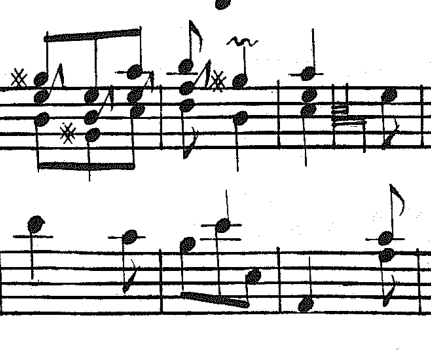Le 05/12/2021 14:04, David Pickett via The Jackrail écrit :
The arpeggios of one and the repeated figuration of the other seem to me to be typical “preludising”.
And are typically found in Bach’s or Handel’s “Preludes”.
Le 05/12/2021 14:04, David Pickett via The Jackrail écrit :
The arpeggios of one and the repeated figuration of the other seem to me to be typical “preludising”.
And are typically found in Bach’s or Handel’s “Preludes”.
According to the internet, a Dies comitialis is any of the 190 days of each year on which the people under the Roman republic could meet for legislation or election. "Comitialibus diebus appears to be found in ancient Roman inscriptions. I expect the same is true for “Caesaris Decreto”. The phrase “Cum privilegio sacre caes. majestatis” is used by some German 17th- and 18th-century artists in their engraved publications. But one would put that kind of thing on the title page and not at the start of a prelude.
At the start of a prelude I suppose it’s possible that C. could stand for Latin “cum” (cum discretione? divisione? dulcedine?), or Italian equivalent, but I wouldn’t have expected capital letters for that kind of instruction. So Claudio’s cosidetto is the best option so far, even if the word spacing on the page does link “CD” with “Praeludium”.
I’d probably translate “Certamen musicum” as “musical contest” rather than “musical struggle”.
I considered that; but I see nothing in these preludes that reminds me of Froberger.
All this discussion on “C.D.” is a proof that a critical edition isn’t useless at all, isn’t it.
As for the C.D., I have no clue. As harpsichord- or music- related meanings could apply, I only can think of “Clavier Double”, which of course can’t be the solution.
As the preludes are the first piece in the suites, the “C.D.” can apply to the preludes themselves, but could apply to the whole suite as well, no?
Dom
Quite possibly so. But we havnt seen the contents, dont know the quality of the editing process, whether the “corrections” are more significant than fixing obvious errors, or whether the secrets of C. D. are revealed. As I wrote earlier, assuming these queries can be answered in a positive manner, the price is fair; but I could find no information about where to get it and how much they will charge for postage.
Yes, of course we don’t know what the quality of the new edition is. I only wanted to hint at the fact that a critical edition is - or should be - something more than the manuscript or ancient edition. That’s why I am not a great advocate for “playing from source” (and by the way: which source?).
As for the postage, it’s a pdf so no postage costs.
D
According to the website:
The present publication is the world’s first critical edition of Kellner’s “Certamen Musicum”, six harpsichord suites first printed in Arnstadt, of which a copy is extant in Berlin’s Staatsbibliothek.
Where does it say that it is a pdf, and how does one purchase it (I was unable to discover)?
|
|
- | - |
Where does it say that it is a pdf, and how does one purchase it (I was unable to discover)?
Here: https://www.edizionipianeforte.it/237/?fbclid=IwAR3WVC1uGuRAjObaORrnT56pGqu2Pc783ze_ZPSgT09DqqRrr5rZwiA9N4Y
at the bottom of the page there is a pdf icon with the caption “partitura”. On the same line, on the right, there is the button “add to cart”.
And indeed, I followed the procedure for purchasing and there was no options for printed or pdf form and the grand total was 12.00 eur, with no postage fee. I didn’t the last click because I am not interested, but I think we can safely assume it’s a pdf.
(which I don’t love, by the way)
Dom
I will produce it in PDF form for downloading, with updates easily made.
That seems correct to me (and my day job for 35 years was as a Latin teacher). Certamen is basically a contest, although it some contexts it can mean struggle, battle, etc. Dies comitialis is indeed a day on which elections could legally be held in ancient Rome, but I agree that is not relevant to this publication.
I have seen many passages such as the attached (from Moyreau’s “La Bourruë”).

The right-hand eighth notes are stemmed separately, which supports David’s idea. But in the left hand, the tenor voice comes and goes with no rests. It’s easy (and idiomatic) for keyboardists to add or subtract notes/voices. But the different treatment of the two hands makes me hesitant to draw conclusions about how 18th c. composers thought.
Isn’t the rest of the tenor part in the upper staff, except for the last quaver of the extract, where a note seems to be missing for the alto?
You are probably right about this example. I’ll try to find a better one; I know I have seen some where the voice leading was simply not consistent.
Either way, it’s an excellent example of a focus on separate voices, rather than on chords.